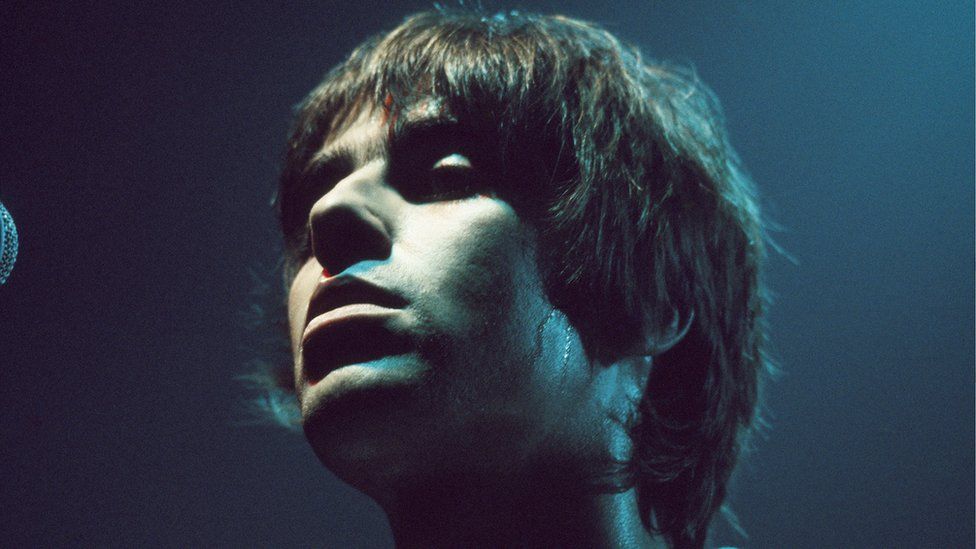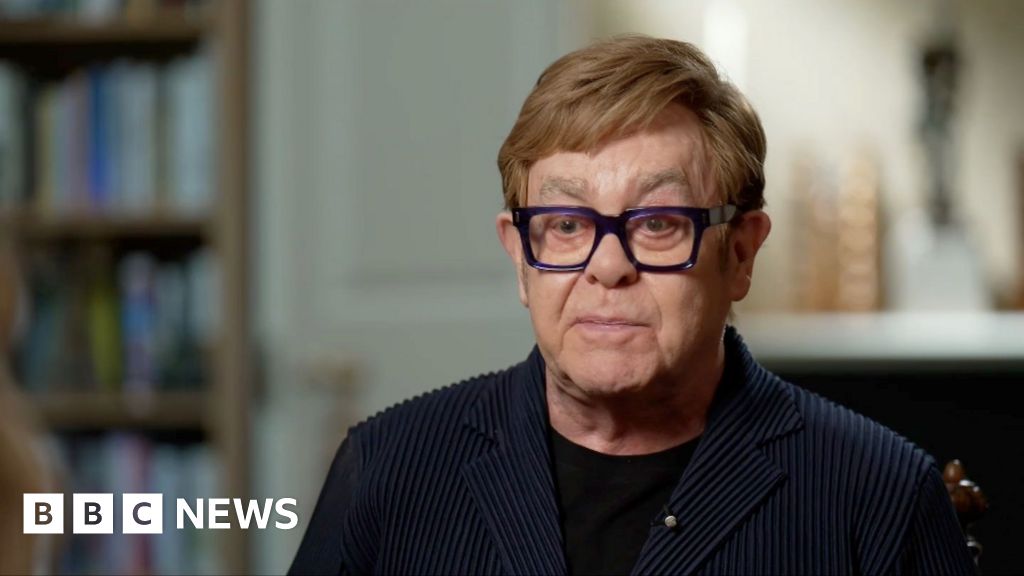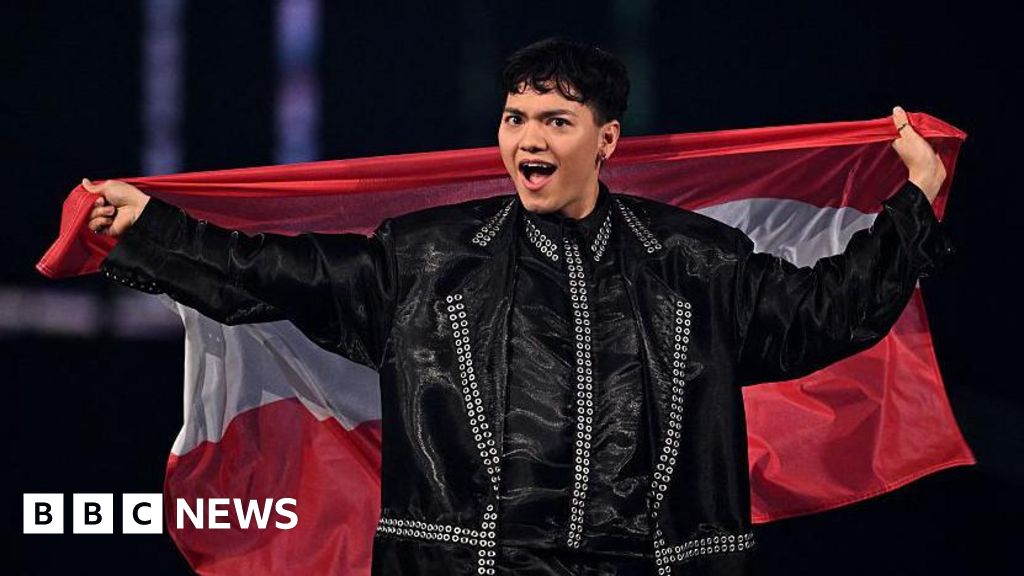ARTICLE AD BOX
 Image source, Jill Furmanovsky
Image source, Jill Furmanovsky
Jill Furmanovsky at an Oasis concert: "The audience seemed as mesmerised by Liam Gallagher as I was"
By Guy Lambert
Entertainment reporter
Jill Furmanovsky's five-decade career has seen her photograph some of the world's most famous music stars - from Sinead O'Connor to Billie Eilish, and Bob Marley to Amy Winehouse.
The photographer is being crowned Legend of the Year at the So.Co Image of Music Awards, with its boss, Vince Bannon, saying: "Jill's incredible work has touched the lives of millions of music fans globally."
The body, which supports music careers and music-making, added: "Music photographers are the heartbeat of what we do at So.Co, and we couldn't be more excited to honour Jill's legacy at this year's awards."
Furmanovsky grew up in Southern Rhodesia, now Zimbabwe, before moving to London at the age of 11, which she called a "traumatic change".
"I came from a small town called Bulawayo, and I was used to being able to be barefoot and quite independent," she tells the BBC.
"I would go on my bicycle and visit my Granny in the bush.
"It was a very different lifestyle being in 1960s London. We came to the UK in February and I'd never seen snow before or felt that kind of cold."
Image source, Nick Mason
Image caption,A young Jill Furmanovsky photographed by Pink Floyd drummer Nick Mason
Western music and photography began to feature in her life thanks to her father.
"My father was an architect, but he loved jazz music and photography. He had a darkroom at home. So in fact my dad's hobbies became my career.
"I didn't like the jazz records he was playing at the time, but I had an auntie who liked Elvis.
"Then we heard about The Beatles, but because it was Africa to us, beetles were these insects that we were familiar with found in the mud, so we thought it was very amusing that there'd be something called The Beatles."
Beatlemania was in full swing in 1960s Britain and Furmanovksy found herself thrust into the heart of the frenzy.
Early Paul McCartney shots
"I was slightly too young to be an 'Apple scruff' because they got to do sort of errands like buy milk and cigarettes for The Beatles, but I was certainly an autograph hunter.
"I had my Kodak Instamatic, so I did stand outside Abbey Road a great deal.
"I took my first rock shots of Paul McCartney outside his house with two of my school friends. He was and still is very artful, honouring the fans if that's the right word."
Her early encounters came in useful when she went on to study textiles and graphic design at Central St Martins in London.
After only two weeks' training, she had a lucky break when she was offered the job of official photographer at London's premier rock venue, The Rainbow Theatre, in 1972.
"I was on this two-week course in photography at the beginning of my second term" she recalls, "they gave you a college camera for the weekend, and I was going to the Rainbow Theatre to see the band Yes.
"I was up in the balcony and I could see these little dots on the stage and I could also see some photographers working in the pit. I thought if I go down to the auditorium, maybe they won't notice that I'm not professional with this fancy-looking camera.
Seizing the moment, Furmanovsky strolled through the auditorium doors, walked down the central arm and started taking pictures.
Image source, Jill Furmanovsky
Image caption,The Clash playing at the Rainbow Theatre in 1977
"I only had four days' experience at this point. I didn't know what I was doing," she says.
She was later asked by people working at the gig if she was professional, and she said she was.
"This was obviously not true but they offered me their position as the official photographer," she adds.
"So I began working at the Rainbow Theatre at the age of 18, without a salary, but with this fantastic access to all these shows that were on.
"I like to think it was fate. I was waiting for an opportunity and just took it when it showed itself."
Image source, Jill Furmanovsky
Image caption,Bob Marley in London in February 1978
Before long, Furmanovsky was shooting the biggest rock stars of the 1970s and 1980s, including Led Zeppelin, Pink Floyd, The Ramones, Eric Clapton, Blondie and The Clash as they graced the Rainbow Theatre stage. She also took some early images of the Sex Pistols.
But by 1991, she was thinking of giving up on photography, because her studio was too expensive to run and it was "quite a tough time for me".
One of her photographs - a picture of Charlie Watts in Q magazine - helped saved her career though.
"When The Jane Bown Observer Portrait Award came up and I had to put it in," she says.
Furmanovsky won the award in 1992, and found it gave a new lease of life to her work.
"I couldn't believe I won - Jane Bown was one of my heroes," she says.
"Plus it had money. Not just you won a packet of crisps or something. It paid the bills and I thought this is still meant to be. I must carry on."
Image source, Jill Furmanovsky
Image caption,Jill Furmanovsky's award winning photograph of The Rolling Stones drummer Charlie Watts
Charlie Watts was renowned for being the most modest member of The Rolling Stones, and when the portrait of him was named the winner, he wrote to Furmanovsky.
"I've got a handwritten letter from him saying congratulations and he signed it 'CR Watts', then in brackets, 'Drummer Rolling Stones'.
"The fact Charlie Watts had such a work ethic, that he was so utterly brilliant, that he was a backroom person, that he was the invisible member of The Stones. These all resonate with me.
"In that picture it's got this kind of extraordinary Mona Lisa feeling to it. You feel hopeless, kind of smiling inner smile on this man even though it's in profile."
If there is one photo that she had to call her favourite, it's this one, she says.
"If there was a Desert Island Discs photo, that would probably be the one I'd stick on my rock and look at."
Image source, Jill Furmanovsky
Image caption,"The audience seemed as mesmerised by Liam Gallagher as I was", says the photographer
In 1994, Furmanovsky's career would take another life-changing turn when an extensive relationship with an up and coming band from Manchester was born.
"I had a book called The Moment," she says, recalling a personal diary she created "from The Beatles to whatever was coming up now, and Oasis were coming up at the time".
"I took the pictures then about a week later, their PR asked if I would like to work with them? And I was like, yeah, actually I would!
"Three years later and I've documented this massive, massive explosion of their talent."
Furmanovsky continued to work with Noel and Liam Gallagher until 2009.
"It was wonderful" she recalls, "I feel I did my best body of work with them. They liked working with women.
"They had a woman tour manager and a lot of the management were female, and [all of the band's] mothers were big figures in their lives."
Image source, Jill Furmanovsky
Image caption,Furmanovsky says she still get a shiver when thinking about Oasis's Maine Road performance in 1996
Working with Oasis during their meteoric rise to stardom presented a number of iconic moments for Furmanovksy, but while Knebworth House and Glastonbury will always stick in the memory, there was one concert that will forever be the most memorable.
"Maine Road was even more extraordinary than Knebworth because it was in Manchester. It was where they had gone as children, as fans of the football team.
"When they walked out on that stage and all the little houses in the background in that crowd, I still get a shiver from it now. It was a homecoming. It was a 'look what we've done, Manchester, look what we've done for you'."
From Abbey Road to Maine Road, Furmanovsky had gone from following one supergroup as a fan, to working on stage with another.
"I couldn't do the Beatles, but I could do Oasis, and they loved the Beatles," she says.
Image source, Jill Furmanovsky Archive
Image caption,Jill Furmanovsky photographed singer Sinead O'Connor in 1994
As well working with big male acts including Madness, Depeche Mode and the legendary Bob Dylan at Glastonbury, a time Furmanovsky calls her "pinch me" moment, the photographer says she's really enjoyed working with "edgy females".
"Sinead O'Connor was so beautiful, as is Billie Eilish, and both of them have worked against their beauty. They have both got a kind of edgy, slightly scary feeling to them.
"You could dress them up and be drop dead gorgeous, but they are like Debbie Harry and Chrissy Hynde, very attractive women who have got this edginess.
"Amy Winehouse is another person. A bunch of these edgy women who have each forged their character in quite difficult circumstances."
Image source, Jill Furmanovsky
Image caption,Furmanovsky says of Amy Winehouse in 2006: "At that moment she was probably the happiest she had ever been"
Furmanovsky hopes in the future there will be a centre for rock and roll visual heritage in the United Kingdom, to provide "inspiration for the next generation".
Jill Furmanovsky will be presented the 'Legend of The Year' award at the So.Co Image of Music Awards on Tuesday 26 March.

 1 year ago
36
1 year ago
36








 English (US) ·
English (US) ·